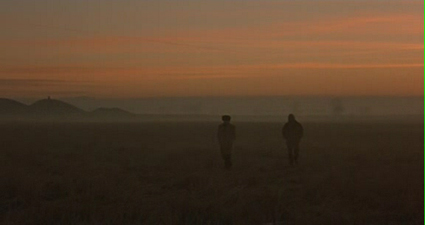
La Vie nouvelle is the nightmare of western civilization faced with the catastrophe of its own existence.
I'm still too puzzled and overwhelmed to write anything more coherent than that, but I'll try. I haven't seen Sombre yet, but so far I prefer Grandrieux working with negatives rather than positives (Un Lac), even though admittedly negative effects are easier to reach than quieter ones (the soudtrack goes a long way in L.V.n.); the reason for this may be that in Un Lac, as pointed out in Spectres du Cinema, the fable form which insists on a-historicity, even when the intruder shows up, only partially convinces me, for the very reasons that are sketched out in the opening sequence of La Vie nouvelle: those faces, staring at the catastrophe, know that there is no Eden possible anymore. Maybe Un Lac was the tale of its loss, I'd have to watch it a second time (I'll have to watch it a second time anyway, I can't even pretend that I got a firm grasp on it the first time, let alone understood it), but the violence of La Vie nouvelle resonates more with me than the attempts to reclaim its preceding innocence.
The dance scene may be one of the single most thrilling (and blood-chilling) film moments of the last decade, akin to very few others I can think of. Its dialectic of control and freedom, of alienation within a crowd (the pimp and his creation first dance alone, bring their bodies to a climax, then go on dancing to the same music, in the same space, that is now filled with people), of possession/independence of the human body, make it the key moment of the film for me. Boyan is the greatest incarnation of the devil on screen that I can think of right now, and nowhere is this more evident than in this sequence, where the seduction of the primary pulsions that Grandrieux is so interested in, and that cause the disaster we are continually witnessing, is laid bare in a giddy swirl of Dionysiac liberation/enslavement (the only other scene that matches this plays exactly like a trip to hell: the thermic scene).

Probably more on this soon...